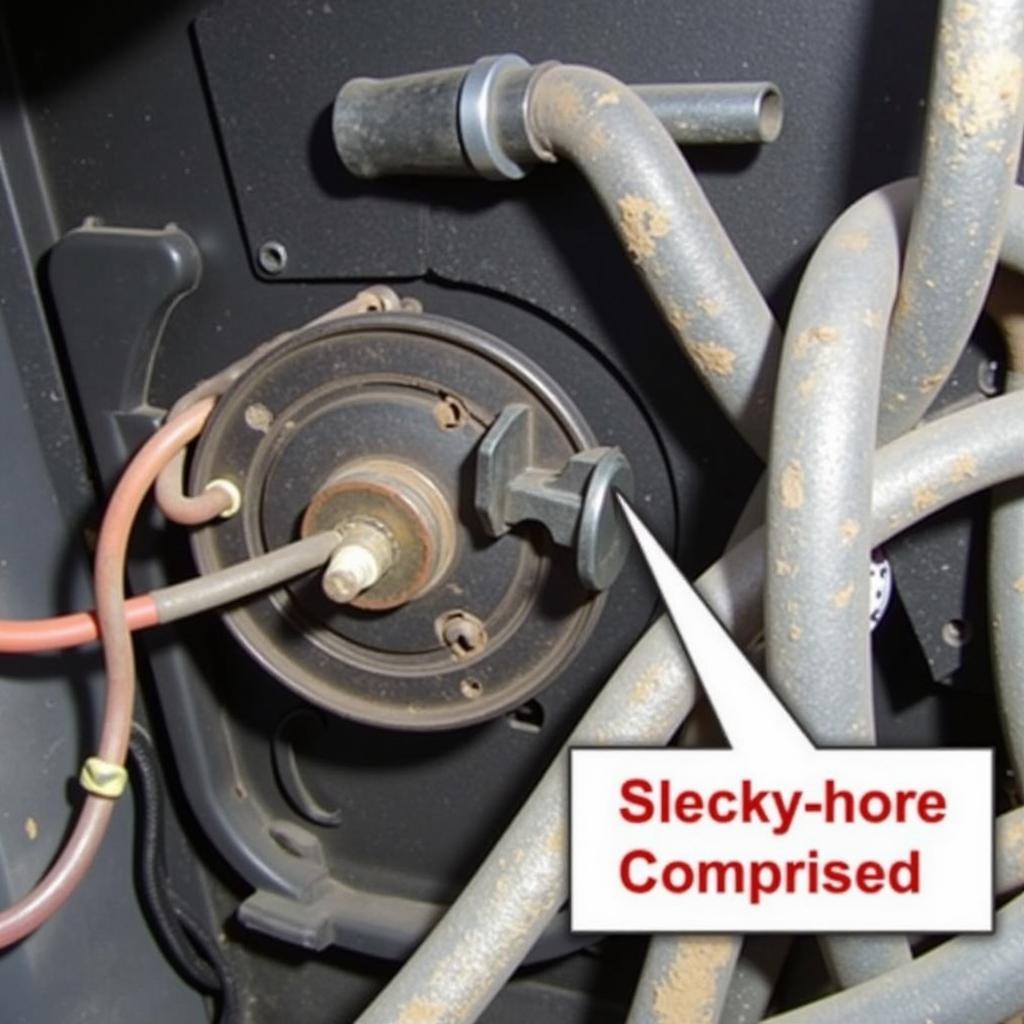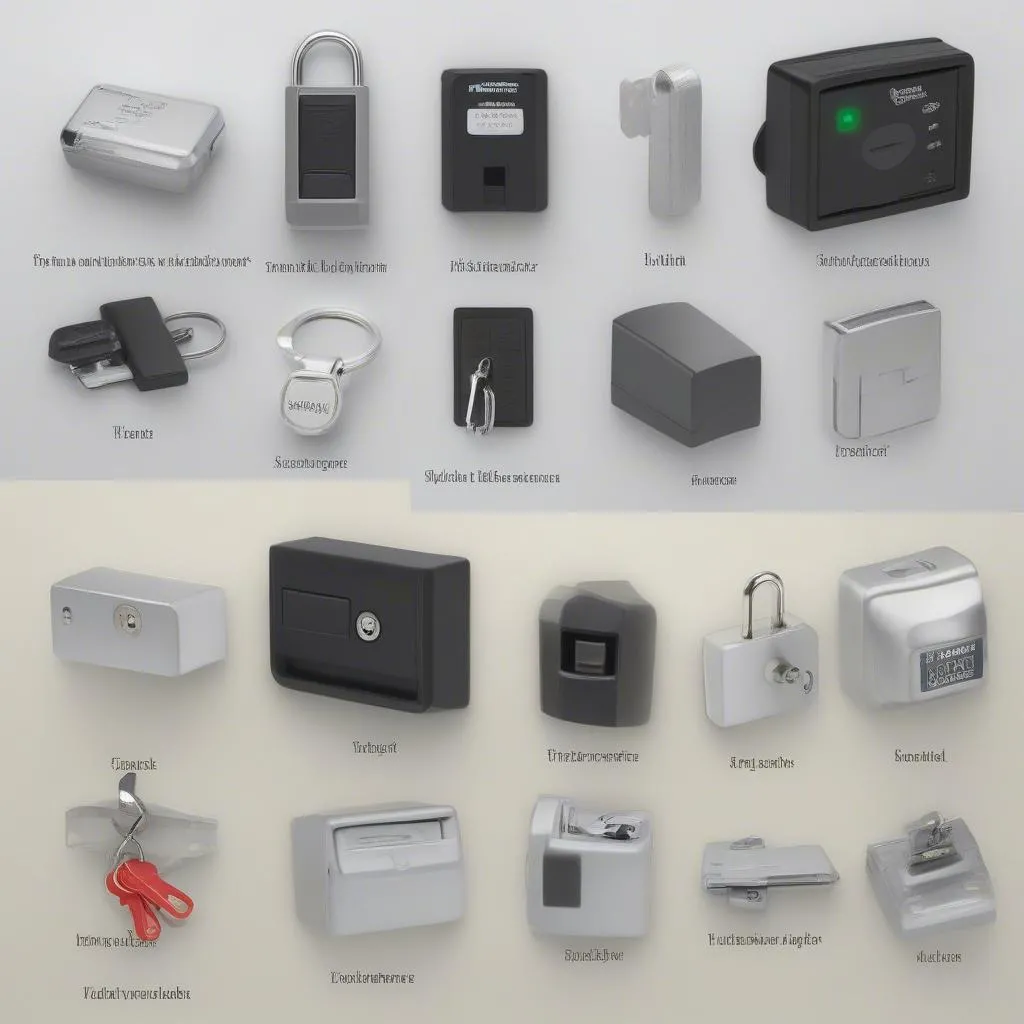The dreaded brake warning light on your 2003 Ford Taurus can be a source of anxiety. Understanding why your 2003 Ford Taurus brake warning light is illuminated is crucial for maintaining safety and preventing potential brake system failures. This comprehensive guide will walk you through the common causes, diagnostic procedures, and potential solutions, empowering you to address this issue effectively.
Understanding Your Brake Warning Light
The brake warning light serves as your vehicle’s primary indicator of brake system issues. It can signal various problems, ranging from low brake fluid to more serious malfunctions. Ignoring this warning light can lead to costly repairs and compromise your safety on the road.
Low Brake Fluid
One of the most common culprits behind an illuminated brake warning light is low brake fluid. This can be due to worn brake pads, a leak in the brake lines, or a malfunctioning master cylinder.
Worn Brake Pads
As brake pads wear down, the brake fluid level in the reservoir drops. If the pads wear down excessively, the warning light will illuminate.
Brake Fluid Leaks
Leaks in the brake lines or other components can lead to a rapid loss of brake fluid, triggering the warning light and compromising your braking ability.
Faulty Brake Light Switch
While less common, a faulty brake light switch can also cause the brake warning light to illuminate. This switch is responsible for activating the brake lights when you press the brake pedal.
Diagnosing the Problem
Diagnosing the cause of your illuminated brake warning light requires a systematic approach.
-
Check the brake fluid level: Open the hood and locate the brake fluid reservoir. Check the fluid level against the minimum and maximum markings. If the level is low, add brake fluid that meets the specifications for your 2003 Ford Taurus.
-
Inspect the brake lines: Carefully examine the brake lines for any signs of leaks or damage. Look for wet spots, cracks, or bulges in the lines.
-
Check the brake pads: Visually inspect the brake pads through the wheel spokes. If the pads are thin or worn down to the metal backing plates, they need to be replaced.
-
Test the brake light switch: If the brake fluid level and brake lines are in good condition, the brake light switch may be faulty. Consult your vehicle’s repair manual for instructions on testing the switch.
Solutions and Repairs
Once you’ve identified the cause of the problem, you can take the appropriate steps to resolve it.
Adding Brake Fluid
If the brake fluid level is low, add the correct type of brake fluid until it reaches the “MAX” line on the reservoir. If the fluid level drops quickly again, it indicates a leak that needs professional attention.
Replacing Brake Pads
Worn brake pads require replacement. This can be done yourself with basic tools, or you can take your vehicle to a mechanic.
Repairing Brake Lines
Repairing or replacing brake lines is a more complex task that typically requires the expertise of a qualified mechanic. Do not attempt to drive your vehicle if you suspect a brake line leak.
Replacing the Brake Light Switch
Replacing a faulty brake light switch is a relatively simple procedure. You can purchase a replacement switch from an auto parts store and install it yourself by following the instructions in your vehicle’s repair manual.
Remote Diagnostics and Programming
In some cases, remote diagnostics and programming can be utilized to identify and address certain brake system issues. However, this is often limited to specific electronic components and may not be applicable to all 2003 Ford Taurus models. Contact a qualified automotive technician specializing in remote diagnostics for more information.
“Regular brake inspections are crucial for maintaining safety and preventing costly repairs. Don’t wait until your brake warning light comes on to address potential issues,” advises John Miller, ASE Certified Master Technician.
Conclusion
Addressing a 2003 Ford Taurus brake warning light promptly is essential for ensuring your safety and preventing further damage to your brake system. By understanding the potential causes and following the diagnostic procedures outlined in this guide, you can effectively troubleshoot and resolve the issue. If you are uncomfortable performing these tasks yourself, seek the assistance of a qualified mechanic. Remember, your safety is paramount.
FAQ
- What should I do if my brake warning light comes on while driving? Pull over safely and immediately check your brake fluid level. If it’s low, add fluid. If the light remains on, have your vehicle towed to a mechanic.
- How often should I check my brake fluid level? It’s a good practice to check your brake fluid level at least once a month.
- Can I drive my car with the brake warning light on? It is highly discouraged to drive with the brake warning light on. It indicates a potential problem that could compromise your braking ability.
- How much does it cost to replace brake pads? The cost of brake pad replacement varies depending on the brand and type of pads, as well as labor costs.
- How long do brake pads typically last? Brake pad lifespan depends on driving habits and conditions, but they typically last between 25,000 and 70,000 miles.
- Can I top off my brake fluid with any type of brake fluid? No, use only the brake fluid specified in your owner’s manual.
- What could be causing my brake pedal to feel spongy? A spongy brake pedal can indicate air in the brake lines, a faulty master cylinder, or other brake system issues. Consult a mechanic for diagnosis and repair.
“Addressing brake issues proactively not only saves you money in the long run but also ensures your safety on the road,” says Susan Davis, Automotive Engineer.


